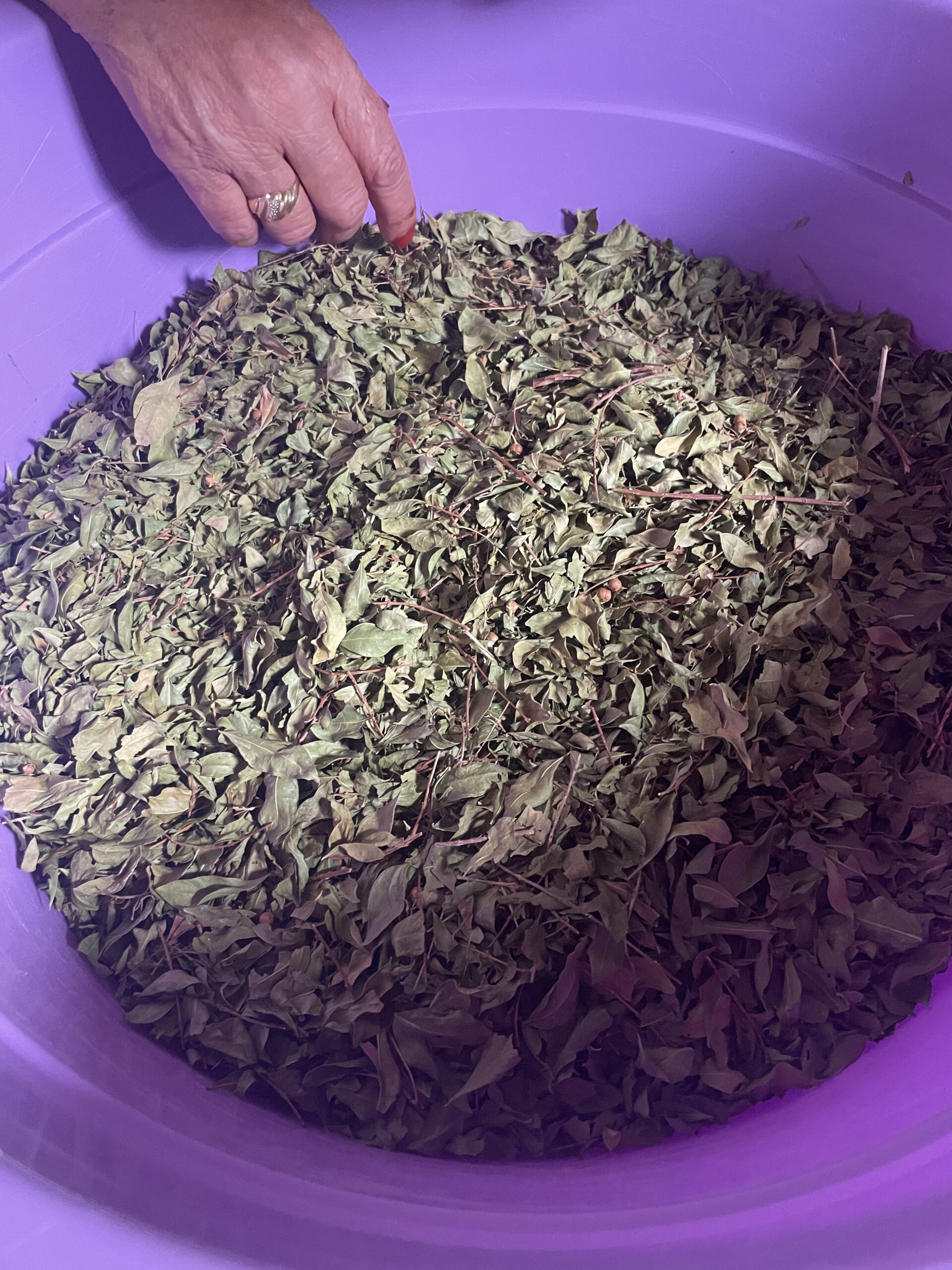The highlight of last week was an impromptu lunch invitation that turned into an unexpected learning event. I was invited to a friend’s house for lunch and to catch up with the host family. We had a lunch of chicken tagine and apple soda. Usually, it is customary to sit together for a while having tea and talking. This can last an hour or maybe five hours, you never know.
After lunch, I noticed a large tub of dry pale green leaves had been dragged into the room. The women started hand-picking twigs or other small debris from the tub. People coming in and out helped while others sanguinely laid back against the adobe walls. For a while, I had assumed it was some sort of tea sorting however it turned out that I was watching the beginning process of making henna. Henna is a plant (Lawsonia inermis ) that is native to North Africa, Asia, and even northern Australia. It is used to make a natural dye that women use on their skin, hair, nails, and even fabrics. It is also believed to have medicinal properties as well and to bring good luck or protection from the evil eye. The tradition of making henna and applying is traditionally passed from older women to female relatives. There is both social and spiritual significance as well as just the beauty of the intricate designs and considerable skill in the craft.
I watched the matriarch of the household sift these dry pale green leaves on a large round silver tray in a fluid motion making it so the crunchy leaves dove off the side onto the spreadsheet but not the remaining small parts of debris. Those bits were put in a plastic bag to the side. Toward the end of each pile on the tray, she would crunch up the leaves and then tap the remaining particles off. This repeated until the tub was empty. Now I had to leave before I saw the next stage in the process but you can read a little more about the process and different designs here. Essentially the leaves are ground into a paste and each artist adds their preferred additions like water, oils, tea, and sugar to make the paste as green as possible which leads to a strong red color on the skin. Then they are put in a modified syringe that gives the artist the ability to make precise designs.




At the same time, the important task of making the afternoon tea was being carried out by another woman. Sitting next to her was a small charcoal burner with a brown ceramic teapot resting on top. The usual small tea glasses were laid on another smaller silver tray while the water boiled. A pile of small crystal-like bits was dumped in one glass. The woman tried translating and even put one crystal on her tongue and handed me one to try. I thought it would be sweet since it had the look of rock candy but I must say it tasted like absolutely nothing. I later learned this was gum Arabic. It is a natural gum harvested from the exterior of the Acacia tree in dry, hard modules ranging from colorless to brown. A common ingredient in tea around here is used as a stabilizing and thickening agent, used in baking, and substitute for some various substances I cannot even begin to pronounce. It is common around my village even brought around the country to sell according to the women. After reading up on it later I even learned that it can also be used as an appetite suppressant but due to unique properties has a bunch of uses in food, beverage, nutritional and pharmaceutical industry.


An example of the tree it’s harvested from below



Leave a Reply